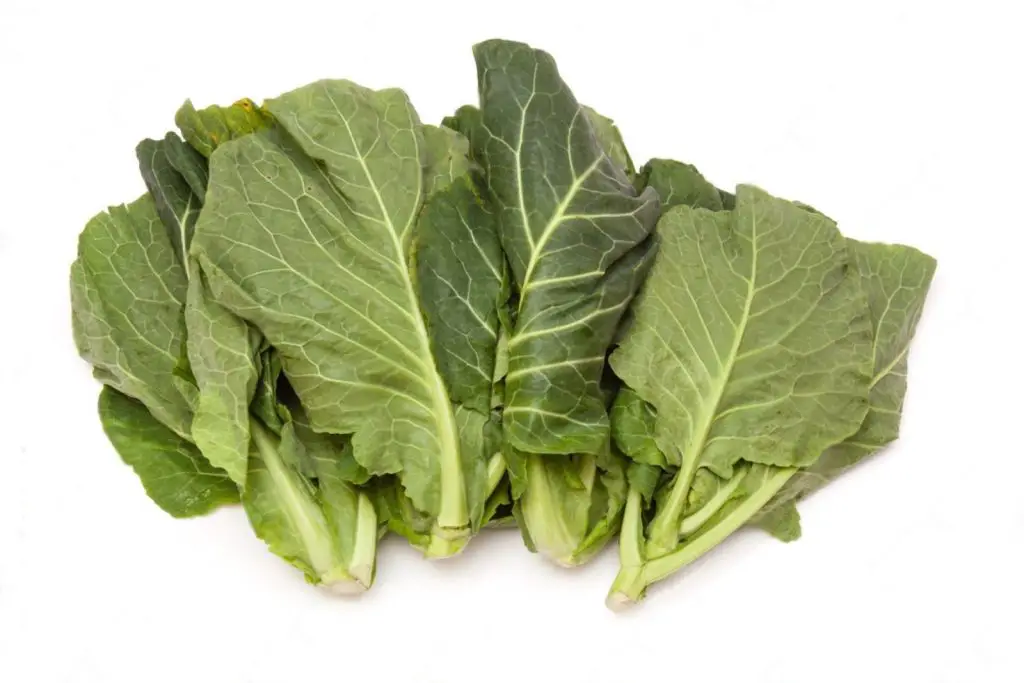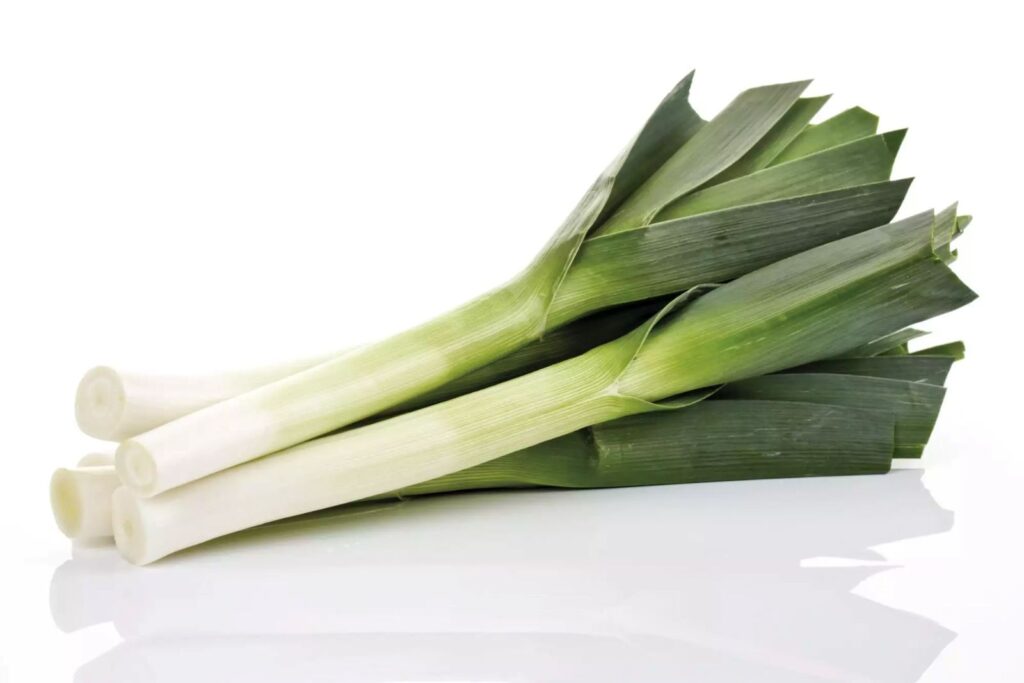Red bell peppers, those vibrant and sweet gems of the vegetable world, have earned a special place in the hearts of food enthusiasts and chefs alike. With their striking red color and crisp texture, red bell peppers bring a burst of color and flavor to a wide array of dishes. From fresh salads and hearty stir-fries to roasted medleys and stuffed delights, red bell peppers showcase their culinary versatility in both cooked and raw preparations. Packed with vitamins, especially vitamin C, and antioxidants, red bell peppers offer a host of health benefits, making them a nutritious addition to any meal. However, when red bell peppers are abundant during their peak season or when purchased in larger quantities, it may be challenging to consume them all before they start to lose their freshness or ripeness.
Freezing red bell peppers becomes a practical and effective method to preserve their delightful sweetness and vibrant color, ensuring that each pepper retains its crispness and nutritional goodness, ready to elevate your meals with the essence of perfectly frozen red bell peppers, even when fresh produce is not readily available or when you wish to enjoy this delightful vegetable at your convenience. In this guide, we will explore the best practices for freezing red bell peppers, allowing you to savor the richness of these colorful vegetables and elevate your culinary repertoire with the essence of perfectly frozen red bell peppers, without the need for a fresh purchase or frequent trips to the market.
Here are the simple steps to freeze red bell pepper:
- Step 1: Select Fresh Red Bell Peppers
- Step 2: Wash and Core the Red Bell Peppers
- Step 3: Blanch the Red Bell Peppers
- Step 4: Drain and Dry the Red Bell Peppers
- Step 5: Slice or Dice the Red Bell Peppers
- Step 6: Arrange the Red Bell Peppers for Freezing
- Step 7: Flash-Freeze the Red bell Peppers
- Step 8: Package and Seal the Red Bell Peppers
- Step 9: Label and Date the Packages
- Step 10: Store in the Freezer
Step 1: Select Fresh Red Bell Peppers
Choosing the right red bell peppers is crucial for successful freezing and preserving their quality. When selecting red bell peppers, it is essential to focus on their ripeness and overall condition. Here’s a breakdown of why each criterion matters:
- Ripe and Firm: Opt for red bell peppers that are fully ripe but still firm to the touch. Ripe peppers have developed their full flavor and sweetness, making them more enjoyable when used in recipes later. However, they should not be overly soft or mushy, as this indicates overripeness and a decline in texture.
- Glossy Skin: Look for red bell peppers with a shiny, glossy skin. A glossy appearance is an indicator of freshness and signals that the pepper has not dehydrated or begun to deteriorate. Dull or wrinkled skins may imply that the pepper is past its prime and could affect the quality of the frozen product.
- Heavy for Their Size: Hold the red bell pepper in your hand and assess its weight in relation to its size. Fresh peppers should feel relatively heavy for their size, indicating that they are full of moisture and nutrients. Lighter peppers might have lost some of their moisture content, affecting their texture and taste after freezing.
- Avoid Soft Spots or Wrinkles: Examine the surface of the red bell peppers closely. If you notice any soft spots, blemishes, or wrinkles, it’s best to avoid those peppers. Soft spots can be a sign of rot or decay, while wrinkles may suggest that the pepper is past its prime and won’t freeze well.
By carefully selecting ripe, firm, glossy, and healthy red bell peppers, you ensure that the frozen product retains its original taste, texture, and nutritional value. Freshness is key when freezing produce, and adhering to these guidelines will help you enjoy the vibrant flavor of red bell peppers in your dishes even when they are not in season.
Step 2: Wash and Core the Red Bell Peppers
Properly washing and coring red bell peppers is an essential step in the freezing process to ensure that any surface contaminants are removed, and the peppers are ready for further preparation. Here’s why each part of this step is crucial:
- Thoroughly Wash the Red Bell Peppers: Washing the red bell peppers under cool running water is essential to eliminate any dirt, pesticides, or other impurities that might be present on the surface. This step ensures that the peppers are clean and safe for consumption. By washing them gently, you avoid damaging the delicate skin and preserve the overall quality of the peppers.
- Remove the Core, Seeds, and Membranes: After washing, the next step is to remove the core, seeds, and membranes from the inside of the red bell peppers. The core is the tough, stem-like portion at the top of the pepper, and it is not edible. By cutting around the stem and removing the core, you make the peppers more convenient to use in recipes later on.
The seeds and membranes inside the red bell peppers can also have a bitter taste and may affect the texture of the frozen peppers. By scooping them out with a sharp knife, you ensure that the frozen pepper pieces will have a sweeter flavor and smoother texture, making them more enjoyable to eat in various dishes.
Step 3: Blanch the Red Bell Peppers
Blanching is a crucial step in the freezing process that helps preserve the color, texture, and nutritional value of red bell peppers. This technique involves briefly boiling the peppers and then rapidly cooling them down in an ice bath. Here’s why blanching is important and how to do it correctly:
- Preserve Color and Texture: When red bell peppers are exposed to high temperatures during blanching, it inactivates enzymes that can cause the loss of color and deterioration of texture over time. By blanching, you can maintain the vibrant red color of the peppers, ensuring they look appealing even after freezing and thawing.
- Retain Nutritional Value: Blanching also helps to preserve the nutritional content of red bell peppers. The brief exposure to heat helps to lock in essential vitamins and minerals, making the frozen peppers a nutritious addition to your meals.
Here’s how to blanch red bell peppers properly:
- Bring a large pot of water to a rolling boil: Use a pot big enough to comfortably hold the red bell peppers you want to blanch. Ensure there’s enough water to submerge the peppers entirely.
- Prepare an ice bath: While the water is boiling, fill a separate bowl with ice and cold water. This ice bath is essential for immediately cooling down the peppers after blanching, preventing them from overcooking.
- Submerge the cored and cleaned red bell peppers: Carefully lower the cored and cleaned red bell peppers into the boiling water. The peppers should be fully immersed to ensure even blanching.
- Blanch for 2-3 minutes: The blanching time depends on the size of the peppers. Smaller pieces may need just 2 minutes, while larger ones may require up to 3 minutes. Keep a close eye on them to avoid overcooking.
- Transfer to the ice bath: Using tongs or a slotted spoon, promptly remove the red bell peppers from the boiling water and transfer them to the ice bath. The cold water halts the cooking process immediately, preserving the peppers’ crispness and color.
After blanching and cooling, the red bell peppers are ready for the next step in the freezing process. Proper blanching ensures that the frozen peppers maintain their appealing appearance, taste, and nutritional value, making them a versatile ingredient for your future culinary creations.
Step 4: Drain and Dry the Red Bell Peppers
After blanching and cooling the red bell peppers in the ice bath, it is essential to drain and dry them thoroughly before proceeding with the freezing process. Here’s why this step is crucial and how to do it correctly:
- Remove Excess Water: When the red bell peppers are blanched and cooled, they tend to retain some water on their surface. Excess water can lead to ice crystal formation during freezing, which may affect the texture and quality of the peppers when thawed. Removing the excess water ensures that the peppers freeze more efficiently and maintain their integrity during storage.
Here’s how to drain and dry the red bell peppers properly:
- Remove from the ice bath: Using tongs or a slotted spoon, lift the red bell peppers out of the ice bath and place them on a clean, dry surface.
- Allow them to drain: Let the red bell peppers sit for a few seconds to allow any remaining water to drip off. This draining process is essential to minimize the moisture content on the peppers’ surface.
- Pat them dry gently: Take a few sheets of paper towels and pat the red bell peppers dry. Be gentle during this process to avoid damaging the delicate skin of the peppers. The paper towels will absorb any remaining water, leaving the peppers mostly dry.
Properly draining and drying the red bell peppers ensure that they freeze more effectively and stay free from excessive ice crystals, which can affect their texture and taste. Dry red bell peppers are less likely to stick together when frozen, making it easier to use the desired amount in recipes without thawing the whole batch. This step is essential to maintaining the quality of the frozen red bell peppers and ensuring they are ready for various culinary uses once thawed.
Step 5: Slice or Dice the Red Bell Peppers
Once the red bell peppers are drained and dried, the next step is to decide how you want to prepare them for freezing. You can either slice or dice the red bell peppers based on your preferences and the types of recipes you plan to use them in. Here’s why this step is essential and how it impacts the convenience of using the frozen peppers:
- Convenience in Cooking: Slicing or dicing the red bell peppers before freezing allows for more convenient use in various recipes later on. By cutting them into the desired size, you eliminate the need to thaw the entire batch when you only need a portion. This way, you can easily take out the required amount of frozen red bell peppers for a specific dish without any waste.
- Versatility in Recipes: The way you slice or dice the red bell peppers can also impact their versatility in different recipes. For example, thinly sliced red bell peppers work well in stir-fries and salads, while diced peppers are perfect for soups, stews, and sauces. By prepping them according to your preferred form, you ensure that they are ready to add flavor and color to a wide range of dishes.
Here’s how to slice or dice the red bell peppers properly:
- Choose your preferred size: Determine the size of the red bell pepper pieces you want to freeze. You can opt for thin slices, thick slices, or diced pieces, depending on your cooking preferences.
- Use a sharp knife: A sharp knife is essential to ensure clean and precise cuts, reducing the risk of damaging the peppers’ flesh during slicing or dicing.
- Slice or dice accordingly: Lay the red bell peppers on a cutting board and carefully slice or dice them according to your chosen size. Make sure to work slowly and pay attention to safety to avoid any accidents.
- Arrange on a baking sheet: After slicing or dicing, spread the red bell pepper pieces in a single layer on a baking sheet lined with parchment paper or a silicone mat. This arrangement will allow for easy separation and prevent the pieces from sticking together during freezing.
Step 6: Arrange the Red Bell Peppers for Freezing
After slicing or dicing the red bell peppers, the next crucial step is to arrange them properly on a baking sheet before placing them in the freezer. This step ensures that the individual pieces freeze separately, preventing them from clumping together during the freezing process. Here’s why arranging the red bell peppers in a single layer is important and how it impacts their quality:
- Prevent Sticking Together: When pieces of red bell peppers come into direct contact with each other during freezing, they can stick together, forming large chunks or clusters. This can make it challenging to take out the exact amount of peppers needed for a recipe without thawing the entire batch. By arranging them in a single layer, you promote individual freezing, allowing for easy separation and convenient use later on.
- Even Freezing: Placing the sliced or diced red bell peppers in a single layer on the baking sheet ensures that each piece is exposed to the cold air in the freezer equally. This results in more consistent and even freezing, preserving the peppers’ texture, color, and taste.
Here’s how to arrange the red bell peppers for freezing correctly:
- Prepare a baking sheet: Line a baking sheet with parchment paper or a silicone mat. These non-stick surfaces will help prevent the red bell pepper pieces from sticking to the tray during freezing.
- Lay the pieces in a single layer: Carefully place the sliced or diced red bell pepper pieces on the prepared baking sheet. Make sure they are spread out in a single layer, with enough space between each piece so they do not touch.
- Avoid overcrowding: If you have a large quantity of red bell peppers to freeze, you may need to use multiple baking sheets to ensure that all the pieces can be arranged in a single layer without overcrowding.
- Use multiple batches if necessary: If you cannot fit all the red bell pepper pieces on one baking sheet, freeze them in multiple batches. This way, you can ensure proper arrangement and avoid overcrowding, allowing for optimal individual freezing.
Step 7: Flash-Freeze the Red bell Peppers
Flash-freezing is a rapid freezing technique that plays a crucial role in preserving the quality of the red bell peppers during the freezing process. By quickly freezing the sliced or diced red bell peppers, you prevent the formation of large ice crystals, which can negatively impact the peppers’ texture and taste. Here’s why flash-freezing is important and how it benefits the overall freezing process:
- Prevent Clumping: Flash-freezing ensures that each individual piece of red bell pepper freezes separately before they have a chance to come into contact with other pieces. This prevents the peppers from sticking together or forming clumps, making it easier to remove the exact quantity needed for each recipe without thawing the entire batch.
- Preserve Texture and Color: Rapid freezing helps maintain the integrity of the cell structure in the red bell peppers, preserving their texture and color. Slower freezing methods can cause larger ice crystals to form, leading to cell damage and a loss of quality. Flash-freezing minimizes this issue, ensuring that the peppers retain their crispness and vibrant appearance.
Here’s how to flash-freeze the red bell peppers:
- Place the baking sheet in the freezer: After arranging the red bell pepper pieces in a single layer on the baking sheet, carefully place the sheet in the freezer. Make sure the sheet sits flat to avoid any uneven freezing.
- Flash-freeze for about 2 hours: The exact freezing time may vary depending on your freezer’s temperature and the thickness of the pepper pieces. However, a typical flash-freezing time is about 2 hours or until the red bell peppers are solidly frozen.
- Test for solidity: To ensure that the red bell peppers are fully frozen, you can gently press on one of the pieces. It should feel firm and not yield to pressure.
- Transfer to storage containers: Once the red bell pepper pieces are fully frozen, remove the baking sheet from the freezer. Carefully transfer the frozen pieces into airtight freezer-safe containers or freezer bags.
Step 8: Package and Seal the Red Bell Peppers
After flash-freezing the red bell pepper pieces and ensuring they are fully frozen, it’s time to transfer them into appropriate storage containers. Proper packaging and sealing are vital to preserving the quality of the frozen peppers and preventing freezer burn. Here’s why this step is essential and how it helps maintain the peppers’ taste and texture:
- Airtight Containers: Using airtight freezer-safe containers or freezer bags is crucial to create a barrier against air and moisture. Air exposure can lead to freezer burn, which can negatively affect the flavor, texture, and overall quality of the red bell peppers over time. Airtight containers prevent air from entering and help retain the peppers’ freshness and taste.
- Remove Excess Air: When using freezer bags, it’s essential to remove as much excess air as possible before sealing them. Excess air can contribute to freezer burn and also lead to ice crystal formation, which can compromise the peppers’ texture. Removing air from the bags helps prevent these issues and keeps the frozen peppers in better condition.
Here’s how to package and seal the red bell peppers correctly:
- Use airtight freezer-safe containers or bags: Choose high-quality containers or freezer bags specifically designed for long-term freezing. Make sure they are labeled as “freezer-safe” to avoid any potential issues.
- Transfer the frozen peppers: Carefully transfer the fully frozen red bell pepper pieces into the containers or bags. Ensure you leave some space at the top of the container or bag to accommodate any expansion that may occur during freezing.
- Remove excess air (for bags): If using freezer bags, gently press down on the bag to remove as much air as possible before sealing it. You can also use a straw to suck out excess air from the bag before sealing it tightly.
- Seal the containers or bags tightly: Ensure that the containers have a secure lid, or the bags are tightly sealed to prevent air from entering.
- Label the packages: Write the contents and the date of freezing on the containers or bags. This labeling will help you keep track of the peppers’ age and use the oldest ones first.
Step 9: Label and Date the Packages
Labeling and dating the packages of frozen red bell peppers is a crucial step in the freezing process. It helps you keep track of the contents and freezing date, ensuring that you can use the peppers in a timely manner and maintain their optimal quality. Here’s why this step is important and how it benefits your freezing process:
- Easy Identification: Labeling the packages with the contents (red bell peppers) makes it easy to identify what’s inside each container or bag without having to open them. This way, you can quickly find the specific ingredient you need for a recipe without any guesswork.
- Tracking Freezing Date: By dating the packages, you can keep track of when the red bell peppers were frozen. Over time, frozen produce can deteriorate in quality, so it’s essential to use the oldest ones first to avoid waste and ensure you enjoy the best flavor and texture.
Here’s how to label and date the packages correctly:
- Use waterproof markers or labels: Choose markers or labels that won’t smudge or fade when exposed to moisture. Waterproof options are best for freezer storage.
- Write the contents: Clearly write “Red Bell Peppers” or “Red Capsicum” on each container or bag. This simple labeling will prevent confusion and make it easy to find the specific ingredient you need.
- Include the date of freezing: Write the date when the red bell peppers were frozen on the label. You can use the month and year format (dd/mm/yy)
- Attach the label securely: If using labels, make sure they are attached securely to the containers or bags. For markers, write the information on a visible part of the package that won’t be easily smudged or covered.
- Store packages in an organized manner: After labeling, arrange the packages neatly in your freezer, making it easy to access and use the oldest ones first.
Step 10: Store in the Freezer
Storing the properly packaged red bell peppers in the freezer is the final step in the freezing process. Proper storage ensures that the peppers remain in excellent condition and retain their taste and nutritional value until you’re ready to use them in your culinary creations. Here’s why this step is important and how it impacts the quality and usability of the frozen red bell peppers:
- Long-Term Preservation: Placing the properly packaged red bell peppers in the freezer provides a controlled environment with consistently low temperatures, preserving the peppers for an extended period. The low temperatures prevent the growth of bacteria and other microorganisms, ensuring that the peppers remain safe to eat.
- Best Quality Timeframe: While frozen red bell peppers can remain safe to eat indefinitely if stored properly, their quality is best when used within a specific timeframe. For optimal flavor, texture, and nutritional value, it’s recommended to use them within 6-12 months of freezing.
- Versatile Use in Cooking: Frozen red bell peppers are excellent for use in cooked dishes like stir-fries, soups, stews, and sauces. They add a burst of color, flavor, and nutrients to various recipes, making meal preparation more convenient and enjoyable.
Here’s how to store the red bell peppers in the freezer correctly:
- Organize the freezer: Make sure you have enough space in your freezer to accommodate the properly packaged red bell peppers. Clear out any clutter and organize the freezer to make access easier.
- Store the packages carefully: Place the labeled and dated packages of red bell peppers in an area of the freezer where they won’t be crushed or damaged. If using multiple batches, keep them together for easy retrieval.
- Maintain a consistent temperature: Ensure that your freezer maintains a consistently low temperature, ideally at or below 0 degrees Fahrenheit (-18 degrees Celsius). Fluctuations in temperature can impact the quality of the frozen peppers.
- Use within the recommended time frame: For the best quality, aim to use the frozen red bell peppers within 6-12 months. While they may remain safe to eat for longer, their taste and texture may start to decline over time.
Other related questions
How do you defrost red bell peppers?
To defrost red bell peppers, place the frozen peppers in the refrigerator overnight or until thawed. Alternatively, you can thaw them quickly by placing the sealed package in a bowl of cold water, changing the water every 30 minutes. Avoid using warm water, as it can partially cook the peppers.
Can you refreeze red bell peppers?
It is generally not recommended to refreeze red bell peppers once they have been thawed. Refreezing can lead to a loss of quality, texture, and taste. It is best to use the thawed red bell peppers promptly or cook them before freezing them again to maintain their optimal freshness and flavor.
How do I know if the red bell peppers have gone bad after being frozen?
To determine if frozen red bell peppers have gone bad, look for signs of freezer burn, such as white or grayish spots on the surface, indicating dehydration and texture changes. Foul odors or off-smells are indicators of spoilage. Additionally, if the peppers show signs of mushiness, discoloration, or an off taste, it’s best to discard them, as they may no longer be safe or enjoyable to consume.
Can you freeze red bell peppers that have been cooked or stir-fried?
Yes, you can freeze red bell peppers that have been cooked or stir-fried. However, it’s important to consider that the texture of the peppers may change slightly after freezing and thawing. To freeze cooked red bell peppers, allow them to cool completely, then package them in airtight containers or freezer bags, ensuring to remove excess air before sealing. Frozen cooked red bell peppers can be used in various dishes, such as stir-fries, soups, and casseroles, after thawing.
Can you freeze red bell peppers with added onions or other vegetables?
Yes, you can freeze red bell peppers with added onions or other vegetables. However, it’s essential to consider the texture and moisture content of the additional vegetables, as they may affect the overall quality after freezing and thawing. To freeze red bell peppers with other vegetables, blanch them before freezing, and ensure they are fully dry before packaging in airtight containers or freezer bags. After thawing, use the frozen mix in various recipes to enjoy the combined flavors and nutrients.
Are there any special considerations when freezing red bell peppers for baby food?
When freezing red bell peppers for baby food, several special considerations are important to ensure safety and nutrition. Thoroughly wash the peppers before blanching to remove potential contaminants. Puree the cooked red bell peppers to a smooth consistency suitable for the baby’s age and remove any seeds or skins that could pose a choking hazard. Use BPA-free containers or ice cube trays for portioning the pureed peppers, and label them with the date for easy identification. Always follow safe food handling practices and consult with a pediatrician for age-appropriate introduction of new foods to your baby’s diet.
Can you freeze red bell pepper slices for use in sandwiches or salads?
Yes, you can freeze red bell pepper slices for use in sandwiches or salads. To freeze, first blanch the slices briefly to preserve their color and texture. After blanching, spread the slices in a single layer on a baking sheet and freeze until firm before transferring them to airtight containers or freezer bags. Frozen red bell pepper slices can be added directly to sandwiches or salads without thawing, providing a convenient and flavorful addition to your meals.








